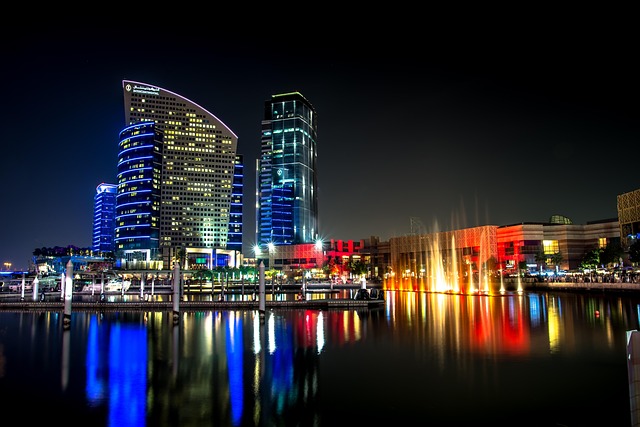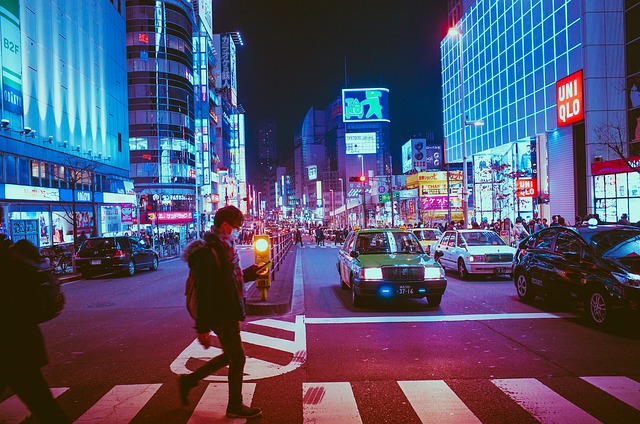Karachi's traffic network, serving as Pakistan's economic backbone, faces challenges due to peak hour congestion and heavy vehicle volumes on major roads. Planners must analyze population density, land use, public transport accessibility, and road infrastructure quality to optimize traffic management in the vibrant metropolis. Garden West, a bustling neighborhood with modern amenities and historic charm, promotes active transportation options despite high vehicular volume during peak hours. The Main Arterial Road near Garden West is a vital corridor connecting key areas, but it frequently experiences congestion due to dense vehicle flow, inefficient public transport, and inadequate road infrastructure. Solutions include expanding road networks, enhancing public transport with better services, implementing smart traffic management systems, and introducing dedicated transit options like bus lanes and light rail services. Integrating these strategies will ease congestion and promote a more sustainable, livable Karachi.
Karachi, Pakistan’s bustling metropolis, faces significant traffic challenges, especially near key locations like Garden West. This article delves into the complex web of Karachi’s traffic patterns, focusing on how Garden West influences local mobility. We explore critical traffic arteries in proximity to the area, analyzing peak-hour congestion and its impacts. Furthermore, we present potential solutions and glimpse into future prospects to enhance traffic flow, aiming to offer a comprehensive understanding of Karachi’s transportation landscape.
- Understanding Karachi's Traffic Patterns: A Foundation for Analysis
- Garden West: Location and Its Impact on Local Traffic
- Key Traffic Arterial Near Garden West
- Peak Hours and Congestion: Challenges and Solutions
- Future Prospects for Enhancing Traffic Flow in the Area
Understanding Karachi's Traffic Patterns: A Foundation for Analysis
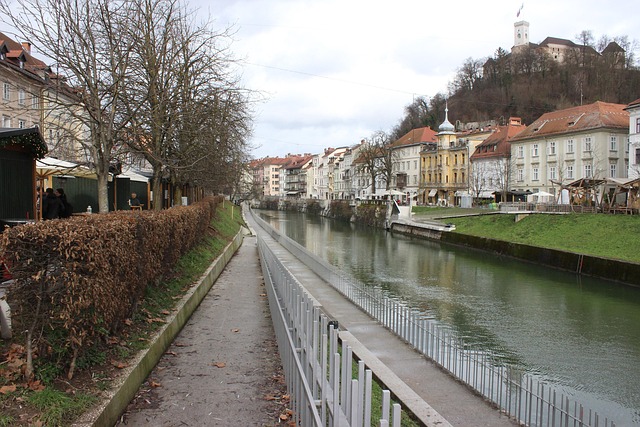
Karachi, as Pakistan’s economic hub, boasts a bustling and intricate traffic network that reflects its vibrant cityscape. Understanding the traffic patterns is crucial for analyzing mobility trends, identifying congestion hotspots, and proposing effective solutions to enhance the flow of people and goods. The city experiences peak traffic during morning and evening commutes, with major roads and highways bearing the brunt of heavy vehicle volumes.
The analysis should consider factors such as population density, land use patterns, public transportation accessibility, and road infrastructure quality. By studying these elements, planners and urban experts can gain insights into the causes of congestion and develop strategies to optimize traffic management. Karachi’s unique terrain, with its winding streets and dense neighborhoods, presents challenges that demand innovative approaches to streamline transportation and create a smoother, safer commuting experience for its diverse population.
Garden West: Location and Its Impact on Local Traffic
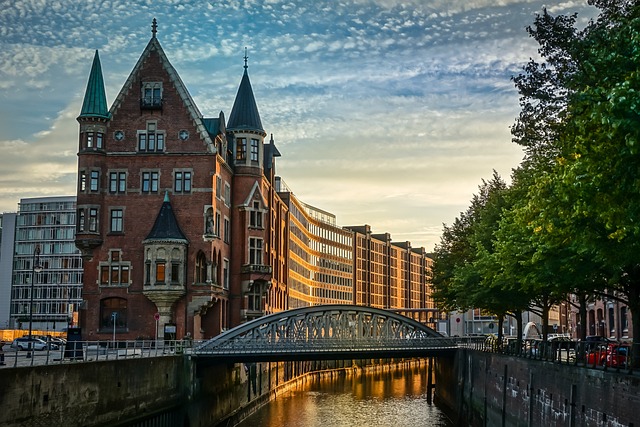
Garden West, a vibrant neighborhood in Karachi, has emerged as a bustling hub, attracting residents and visitors alike. Its strategic location near major commercial centers and residential areas significantly influences local traffic patterns. The area is known for its lively atmosphere, with a mix of modern amenities and historic charm. As a result, the roads around Garden West often experience high vehicular volume during peak hours, especially on weekdays.
This dense population and commercial activity have led to increased car usage, contributing to Karachi’s overall traffic challenges. However, the neighborhood’s unique character also encourages active transportation options like walking and cycling, offering a more sustainable approach to navigating the area.
Key Traffic Arterial Near Garden West
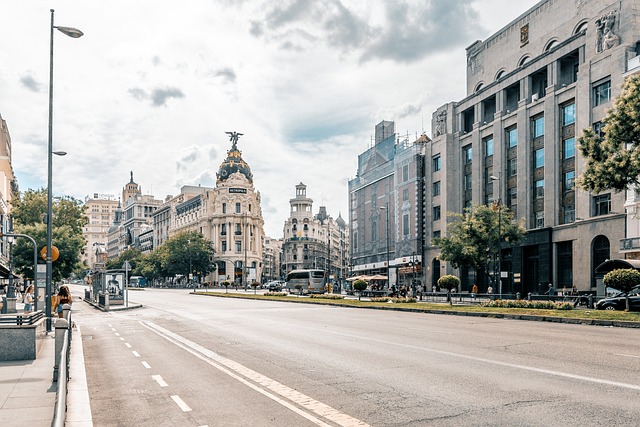
In the vibrant metropolis of Karachi, the traffic near Garden West is primarily facilitated by a key arterial road that serves as a vital link between various parts of the city. This major thoroughfare, often referred to as the “Main Arterial Road,” cuts through the heart of the urban landscape, making it a crucial transportation corridor. It connects Garden West to other significant areas, ensuring seamless movement of vehicles and people across the bustling city.
The Main Arterial Road is characterized by its high traffic volume during peak hours, with a constant stream of cars, buses, and motorcycles navigating through. This artery plays a pivotal role in Karachi’s overall mobility, especially for those living or working near Garden West. Its strategic location allows residents to commute efficiently to nearby commercial hubs, residential areas, and important landmarks, contributing to the dynamic nature of the city.
Peak Hours and Congestion: Challenges and Solutions

In Karachi, peak hours near Garden West often bring about significant traffic congestion. The dense flow of vehicles, public transport, and private cars can lead to severe delays and frustration for commuters. This issue is particularly acute during morning and evening rush hours when thousands of residents travel to and from work or school. The primary challenges include inadequate road infrastructure, lack of efficient public transportation options, and an imbalance between the number of vehicles on the roads and available lanes.
To mitigate these problems, several solutions can be implemented. First, expanding road networks and enhancing existing routes can help alleviate congestion by providing more avenues for traffic flow. Additionally, improving public transport systems with better bus services, metro trains, or light rail can encourage more people to opt for sustainable travel methods, reducing the number of private vehicles on the roads. Smart traffic management systems that utilize real-time data for signal optimization and dynamic pricing for toll roads can also play a crucial role in managing peak hour traffic effectively in Karachi.
Future Prospects for Enhancing Traffic Flow in the Area

In the vibrant city of Karachi, the traffic near Garden West presents unique challenges that demand innovative solutions. To enhance future traffic flow, several prospects can be explored. First, implementing intelligent transportation systems (ITS) such as real-time traffic monitoring and adaptive signal control could help alleviate congestion. These technologies enable more efficient management of traffic signals based on current conditions, reducing delays and improving overall mobility.
Additionally, developing alternative transit options like dedicated bus lanes, high-frequency buses, and potentially even light rail or metro services can encourage public transport use, thereby decreasing private vehicle numbers on the roads. Integrating these improvements with well-planned road infrastructure and smart city initiatives will not only ease traffic congestion near Garden West but also contribute to a more sustainable and livable Karachi.
Karachi’s traffic congestion, particularly near Garden West, presents a complex challenge that requires a multi-faceted approach. By understanding the city’s unique traffic patterns and analyzing the impact of locations like Garden West, we can identify key arterial roads and peak hours where congestion thrives. The solutions discussed offer a glimpse into potential strategies for enhancing traffic flow in the future, aiming to alleviate Karachi’s bustling streets and create a smoother, more efficient transportation network.


